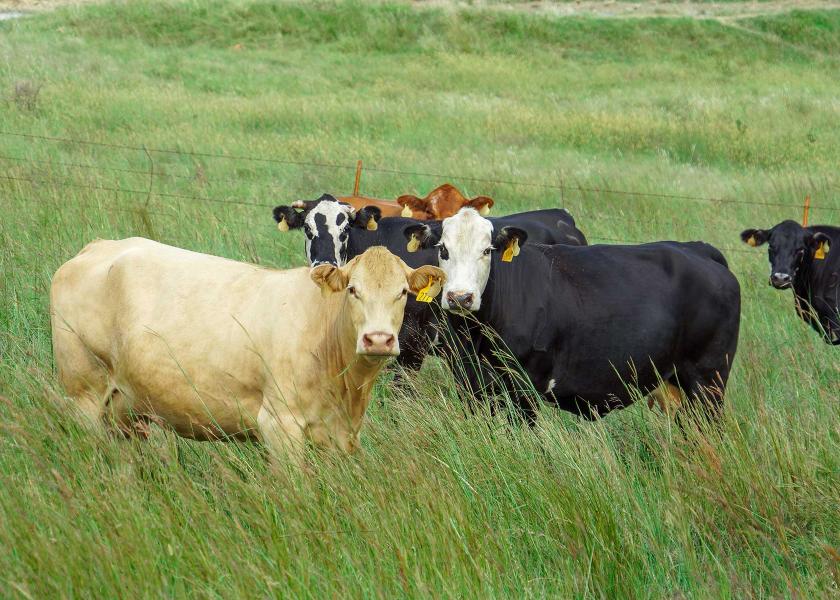Packers: Cow Processors Outpacing Fed Cattle Plants

Cow and bull slaughter for 2021 continues outpacing last year’s totals, and cow processing plants are operating at higher capacity utilization levels than fed cattle plants.
Through October, U.S. cow slaughter was 5.03 million head, or 5.2% higher than last year. During the spring and summer months, cow slaughter in 2021 was 7.7% higher than 2020 and 3.9% higher than 2019, with the trend continuing this fall. Last week cow/bull slaughter was estimated at 146,000 head, 4.1% higher than a year ago and only slightly under 2019.
“The ability of cow processors to slaughter more cows this year contrasts with what we have seen at fed cattle plants,” says Altin Kalo, economist with Steiner Group Consulting. “Steer and heifer slaughter since April has averaged 2% below 2019 levels (comparisons to 2020 are skewed by COVID). Fed cattle slaughter has declined even as feedlot supplies have been more plentiful than in 2019, especially the supply of long-fed cattle.”
What’s behind the ability of cow plants to operate at a higher capacity than fed cattle plants?
“We think that fed cattle plants are far more susceptible to the tight labor market than cow processing plants,” Kalo says. “Our view is fed cattle plants tend to be far larger than cow processing plants. Over the years, they have developed very efficient systems to convert a steer or heifer carcass into well-trimmed subprimals. By virtue of their size (multiple shifts, Saturday work and overall complexity) fed cattle plants are more vulnerable to the tight labor market.”
Large, fed cattle plants are far more difficult to operate when labor is scarce and plant managers don’t know how many workers will show up for work, Kalo says. It’s difficult to schedule cattle for slaughter when you do not have a reliable work schedule plan.
“We think some of these plants need to run at far higher processing capacity than some of the smaller, single shift cow processing plants,” he said. “We can argue whether it is good or bad that processing plants have evolved to this level of processing efficiency, but the current state of affairs developed over decades. It is also important to recognize that far more muscle cuts are harvested in a fed cattle slaughter plant than in a cow slaughter plant.”
Normally, a cow slaughter plant will harvest a few high value cuts (ribeyes, round and chuck cuts, some loin cuts) and the rest becomes grinding beef for hamburger.
“You need less labor to accomplish this than when running a fed cattle plant. More than 3/4 of the beef sold at retail these days is case-ready product,” Kalo said. “What this means is that the grocery store is not bringing in a side of beef and then butchering it in the store. The beef packer harvests, bones and trims specific cuts and all the grocery store needs to do is put it in a tray. Over the years, grocery stores have outsourced their butchering function to the packer.
When the packer faces labor shortages and can bone/trim only a certain amount of product, a bidding war takes place.
“That’s why the beef cutout spiked for Memorial Day and Labor Day far more than the cow cutout did,” he said. “Cow plants are not immune to the labor shortage, however. The value of 100VL beef (highly trimmed cow cuts) has increased dramatically vs. regular grinding beef as labor needed to trim those cuts is tight and demand for extra lean cuts continues to grow.”







